The All Blacks’ 60-13 victory over Fiji was heralded as a more clinical and dominant showing than in their first match-up in Dunedin, but ultimately the recipe was the same as they made Fiji pay through tries constructed through set-piece play.
In the first test, despite having troubles with Fiji at the breakdown, all of the tries bar one came from set-piece plays. It didn’t matter so much that they couldn’t hold the ball for long, they were able to strike quickly when given an attacking platform.
It was the same in Hamilton, just minus the ruck trouble, as a Crusader-fuelled attack tore apart Fiji at regular intervals. After withstanding a strong opening 20-minute period from the Fijians, the All Blacks were able to hit back through quick set-piece strikes.
In the second test, we began to see slingshot plays the Crusaders have mastered around the lineout while David Havili continued to spearhead the backline with the same overload plays we saw in the first test.
With Richie Mo’unga back as the key pivot, the All Blacks continued to show how they are shaping their attack around more plays from the Crusaders playbook. With Brad Mooar in the coaching set-up, this is no surprise as they roll out what many of the players are already familiar with in Christchurch.
In the second test, we began to see slingshot plays the Crusaders have mastered around the lineout while David Havili continued to spearhead the backline with the same overload plays we saw in the first test.
It was Havili who opened up Fiji to set up Sevu Reece for their first try of the night, directly from a lineout platform hitting Fiji right up the seam. The line out seam is one area that the Crusaders routinely test with the slingshot play, but on this occasion, the All Blacks just used a direct line from their second five.
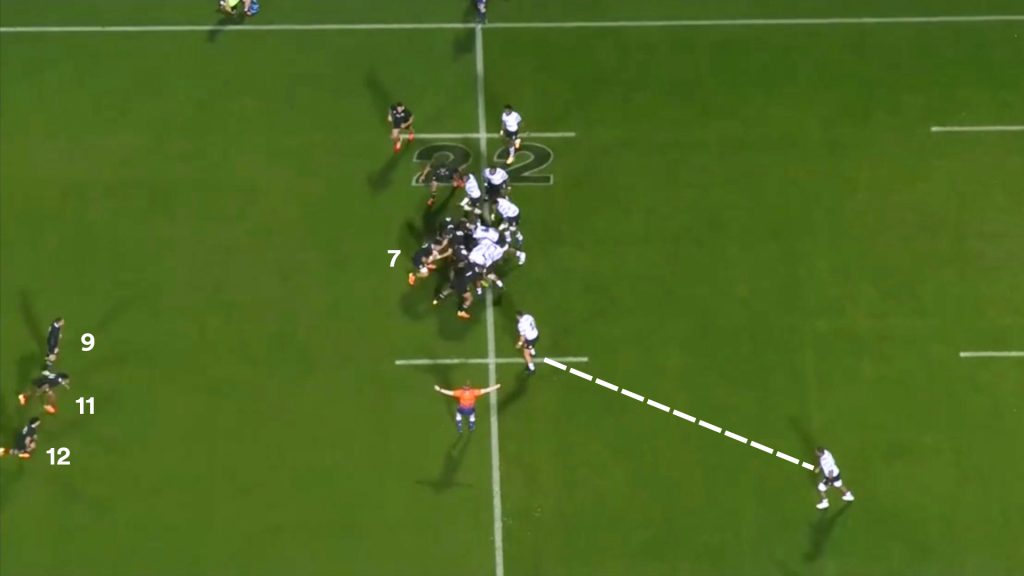
In the initial set-up, we see Aaron Smith (9), Sevu Reece (11) and Havili (12) tight together 10-metres deep while Ardie Savea (7) plays halfback and peels off the back of the maul looking to freeze the tail defender.
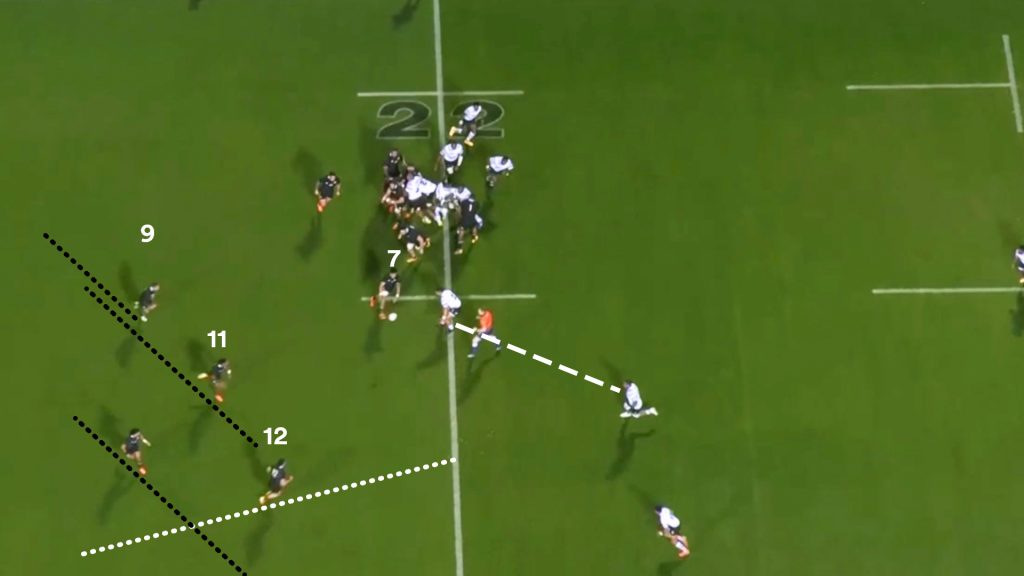
Savea’s work keeps the seem open, and Havili’s angled run back against the grain is ready to ready to tear it wide open. Savea’s flat pass right on the gain line allows Havili to hit the ball with pace and attack the space.
Using a sharp step off the right foot, Havili beats the poor alignment from loose forward Johnny Dyer, who began sliding outward too much, and gets himself into the backfield.
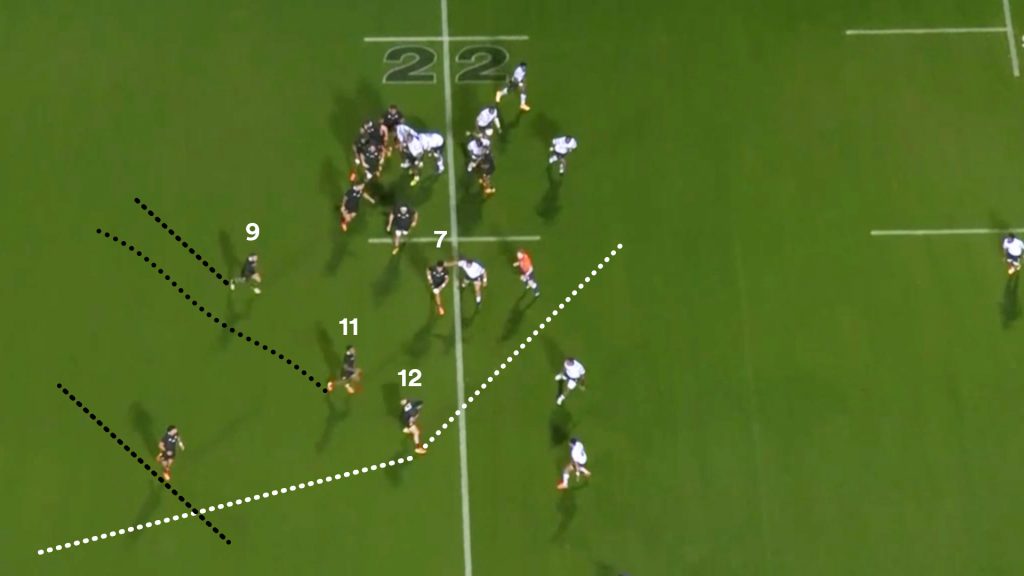

This is where the detail from Fiji doesn’t go the extra mile to prevent New Zealand from scoring.
Blindside flanker Dyer (6) and the tail defender try valiantly to make up for leaving the seam open, but Ben Volavola doesn’t offer any resistance to the support runner Sevu Reece (11) on the outside.
He allowed Reece to run unchecked through a small gap to find Havili, making this an easy layup for the All Blacks second-five.
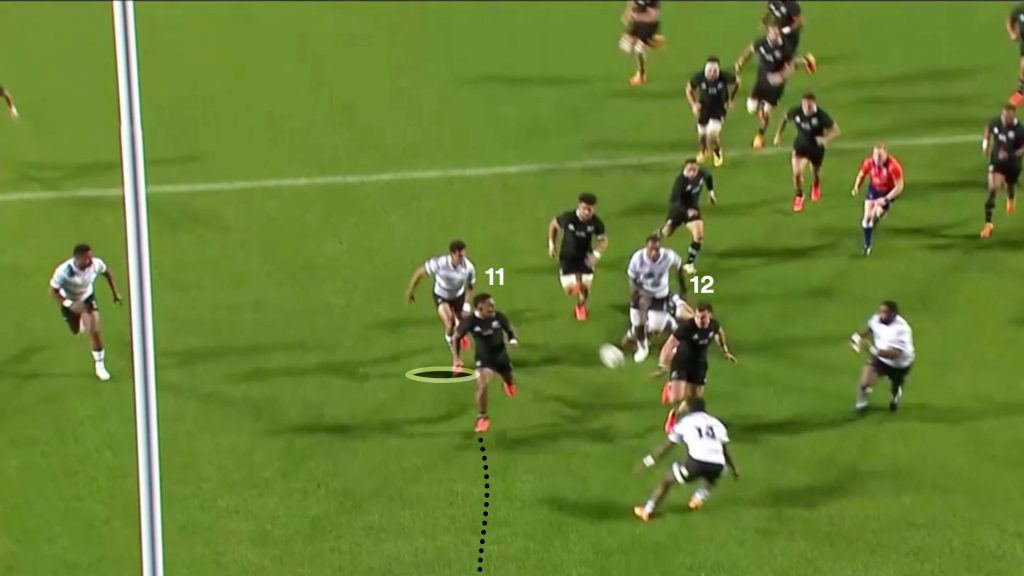
Sometimes it is all about the desperation – and Fiji didn’t have enough of it on this occasion. Line breaks can be conceded but they must then be contained with extra work off-the-ball, and this is where Fiji were caught short, making it too easy for the All Blacks.
Delaying the support runner could have left Havili unable to make the last pass, waiting too long before being tackled.
Off-the-ball work can make or break a play on attack or defence, as Akira Ioane illustrated on Reece’s second try. His work on the edge of the scrum likely went largely unnoticed but played a crucial role in this scrum play down the blindside.
One just has to watch the tackle of Damian McKenzie on Volavola to see desperation in defence, a non-negotiable for the All Blacks. It’s never over until the ball is put down, and it doesn’t take talent to work hard.
Off-the-ball work can make or break a play on attack or defence, as Akira Ioane illustrated on Reece’s second try. His work on the edge of the scrum likely went largely unnoticed but played a crucial role in this scrum play down the blindside.
Having originally lined up on the blindside, some pre-play motion by Mo’unga (10) offers some disguise to their intentions. By the time the ball is fed into the scrum by Aaron Smith he is lined up behind it, selling the potential of playing both ways.
Mo’unga’s motion also gives the All Blacks the chance to see if Fiji will change their defence also. They don’t, leaving the blindside wing Seta Tuicuvu deep.

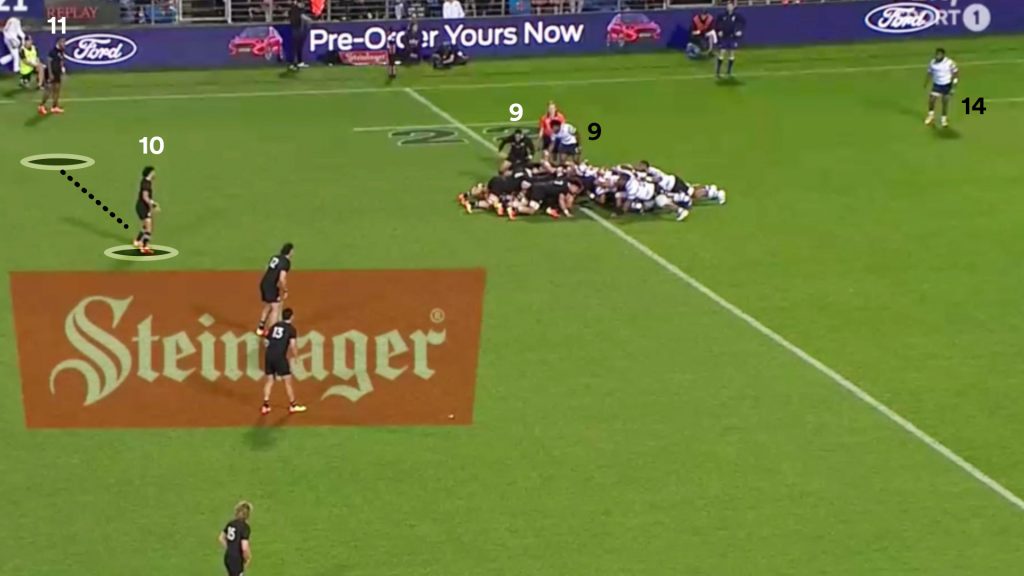
By the time Smith (9) breaks from the base and snipes down the blind, Mo’unga has moved back to his original position and is ready to inject outside his halfback with Fiji caught short of numbers.
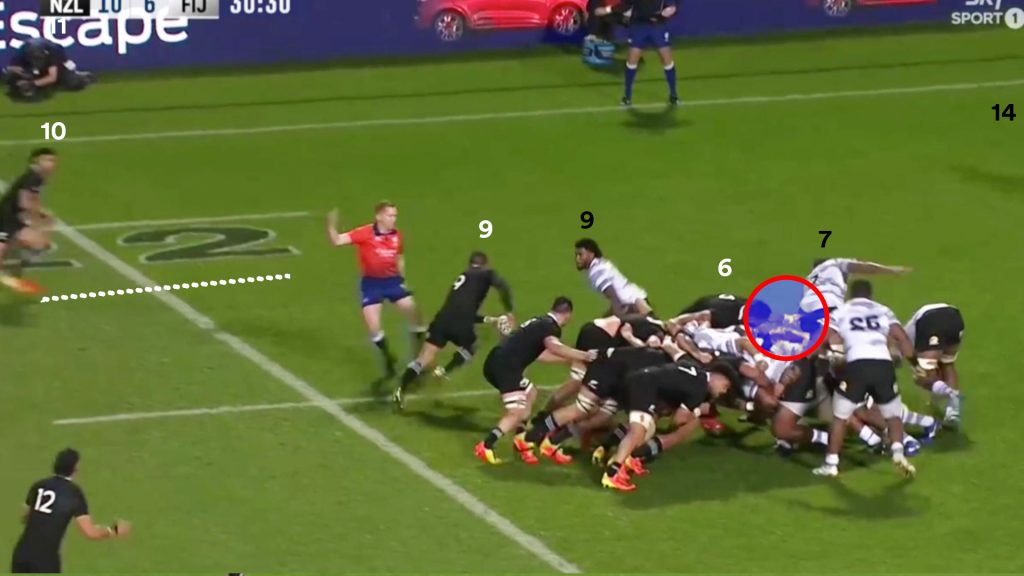
Akira Ioane (6) ensures the blindside flanker cannot get an early break by holding him into the scrum as much as possible.
Mesulame Kunavula (7) has to twist awkwardly to eventually break away, but by then it’s too late, giving Mo’unga a two-on-one to skin the blindside.
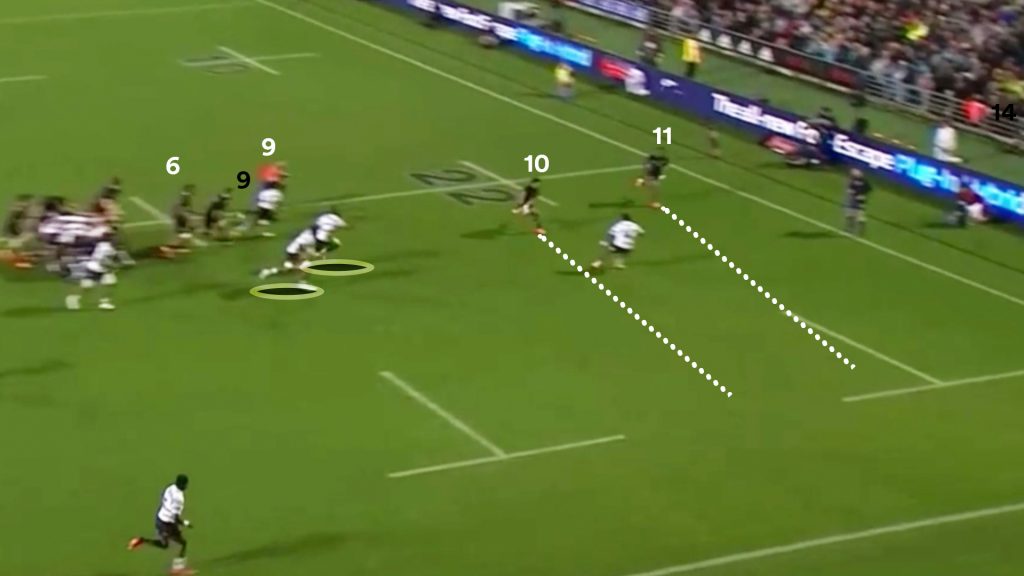
The loose forwards are nowhere near Mo’unga, giving him the option to run or pass to finish this strike. He uses beautiful ball-handling skills to execute this two-on-one.
Sensing Tuicuvu (14) holding off a little bit and wanting to slide onto Reece, Mo’unga double pumps, selling the show-and-go to bring Tuicuvu back into contact before releasing the pass at the last possible split second to give Reece an open run to the line.
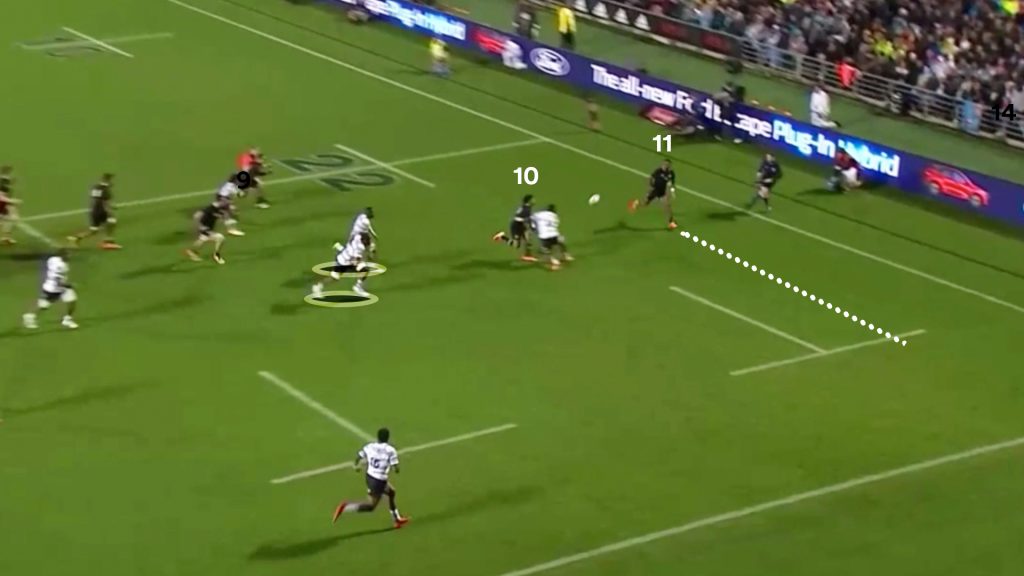
It is sublime playmaking skill by the Crusaders’ 10 to ensure the All Blacks got maximum reward for this scrum play, with each man doing his role, even the off-the-ball work from Akira Ioane that helped buy Mo’unga extra space and time.
Mo’unga laid on Reece’s third try with a shoddy, but fortunate, bouncing long pass a short while later after taking a quick tap close to the line.
When the All Blacks earned another visit to the Fiji 22 on the stroke of halftime, they brought out the slingshot play that uses hooker Codie Taylor to wrap around the entire line out and explode around the corner at pace with options inside and out.
The play, adopted from the Crusaders, was used against the Wallabies last year with success and ended with a try to Aaron Smith in the 16-all draw in Wellington (again, thanks to a little bit of off-the-ball work, this time by prop Joe Moody).
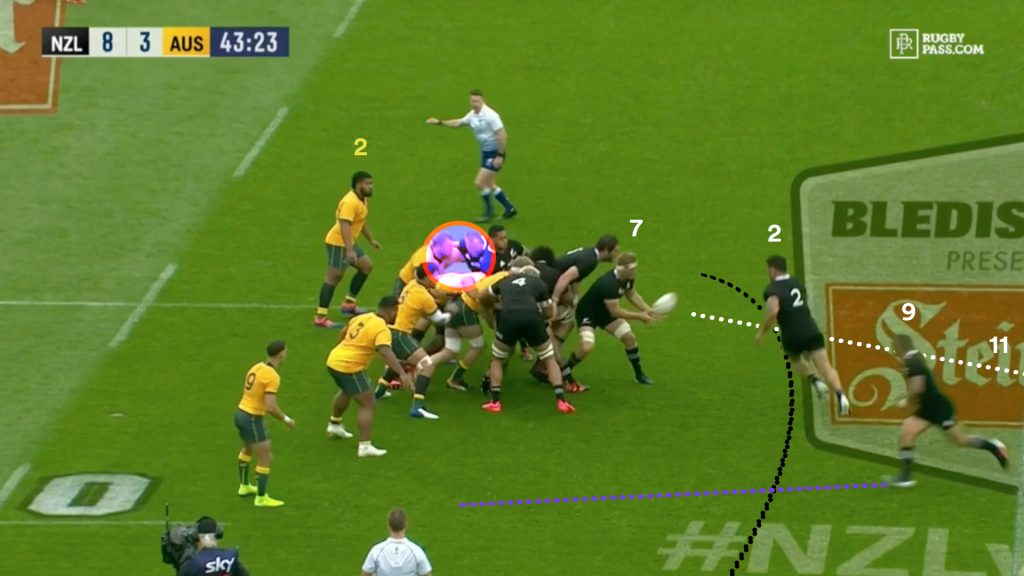
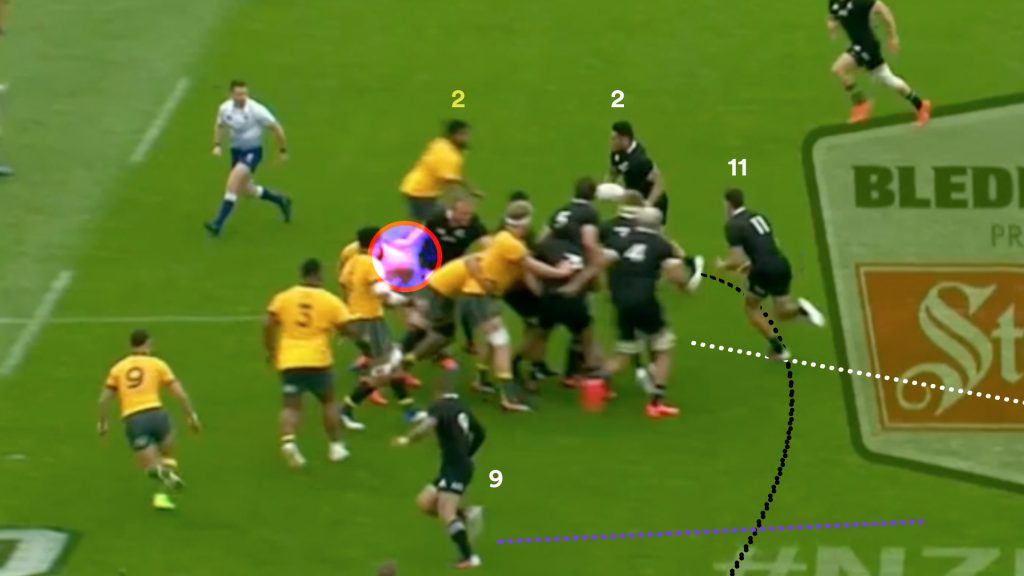

Once the hooker is around the corner with ball-in-hand, they have two options: passing to the blind winger inside or the second five short on the outside.
Against Fiji, Taylor opted to hit Havili flat into the Fijian defence for a decent gain line carry to begin the movement.
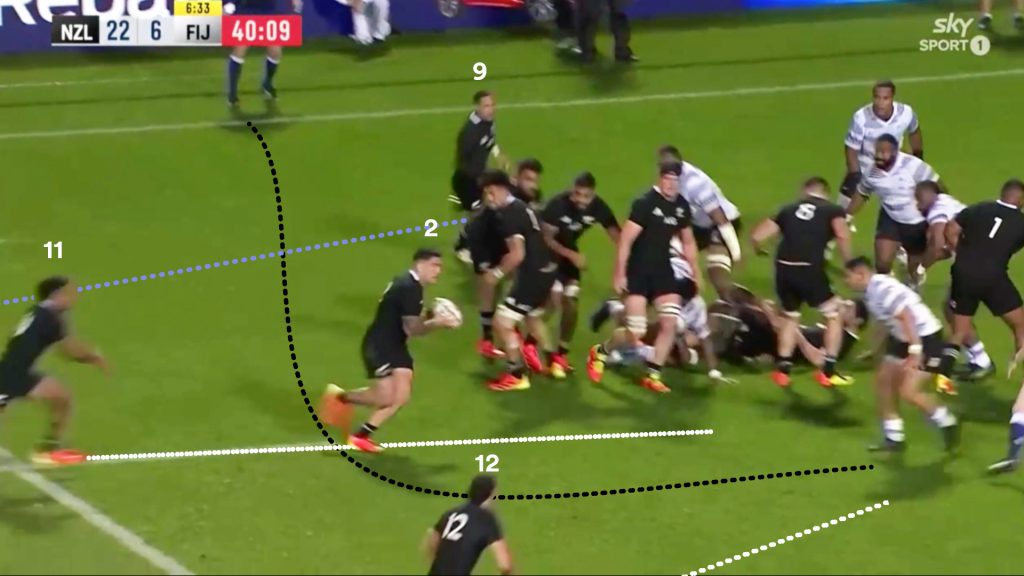
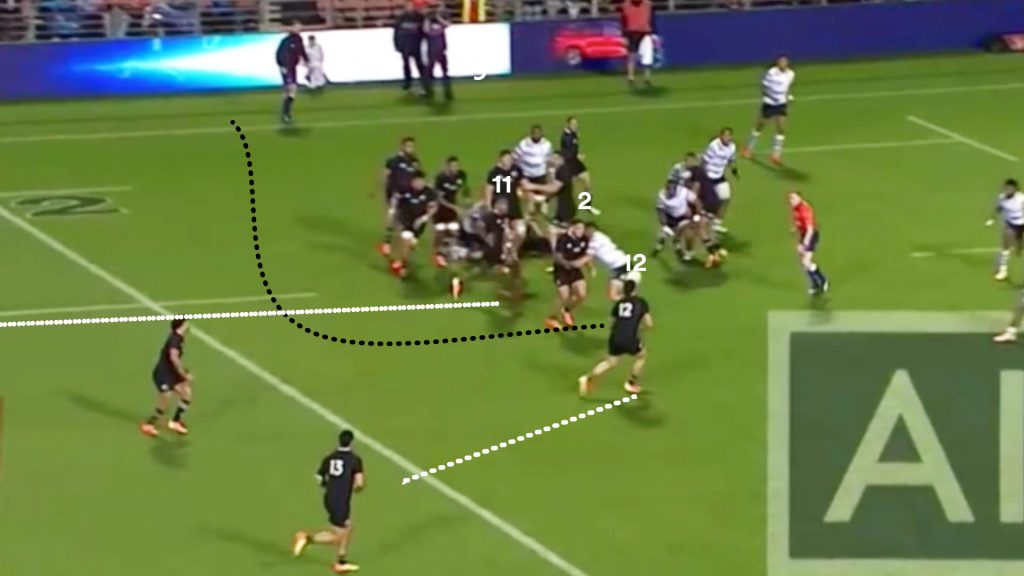
From there, the All Blacks rolled out the heavy artillery using forward carries to bend the line back before Ardie Savea spot an opportunity to take a pick-and-go and charge over from close range.

Altogether, New Zealand amassed four first-half tries – two direct strikes from set-piece on the launch play, and two multi-phase tries on phase three.
The All Blacks have been clinical from organised play over the July tests, and such a prolific scoring rate from planned moves can’t be expected against sterner opposition who might not hit as hard as Fiji, but defend space well and regroup faster.
But you take what you are given, and the All Blacks are executing to perfection to put tries on the board through these methods.
The overload play used throughout the first test inside the Fiji 22 was again brought out early in the second half as Mo’unga added his third try assist of the game.
As he did at times in the first test, Havili took on the line cutting back instead of playing Mo’unga around the back on the first phase. Tucking and taking on Volavola, Havili brings play down inside the five-metre line.

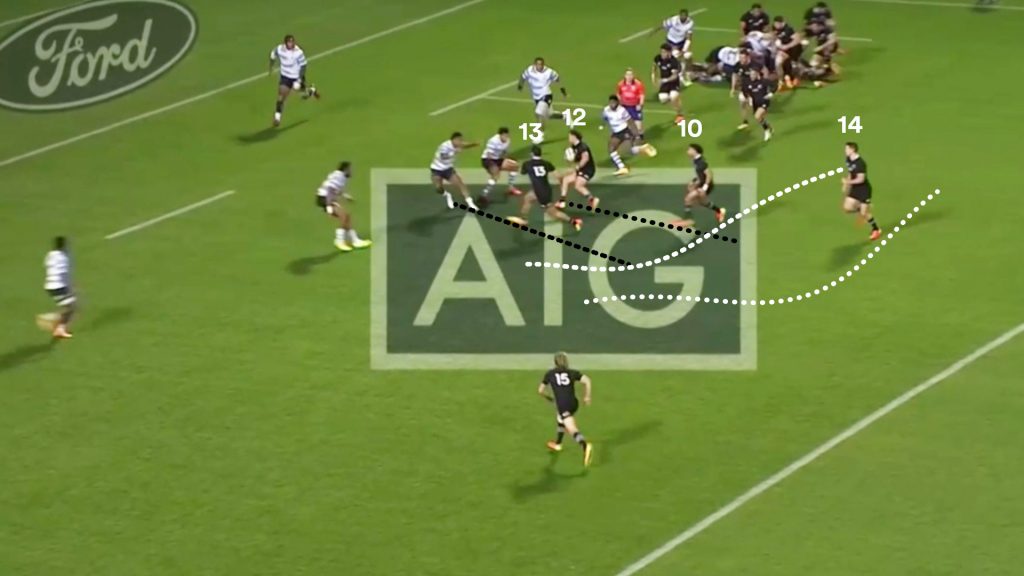
Although they weren’t used on the first phase, Mo’unga and the sweeping winger Will Jordan (14) re-position for the next one and have good front-foot ball to play off.
Luke Jacobson (8) provides another great example of off-the-ball effort on the play. Although he doesn’t get the ball, his extra work rate to fold around the ruck from the line out and run a dummy line across Mo’unga helps draw contact from the Fijian line and open up gaps for the backs.

With quick ball from the ruck, Mo’unga plays Will Jordan into a hole and the Crusaders speedster jogs over for another try worked off a set-piece platform.
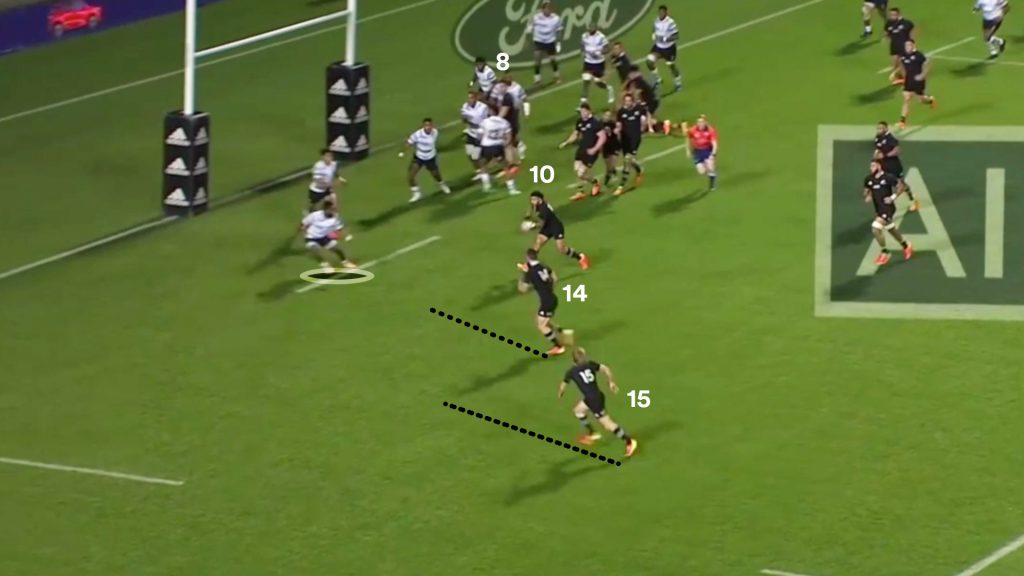
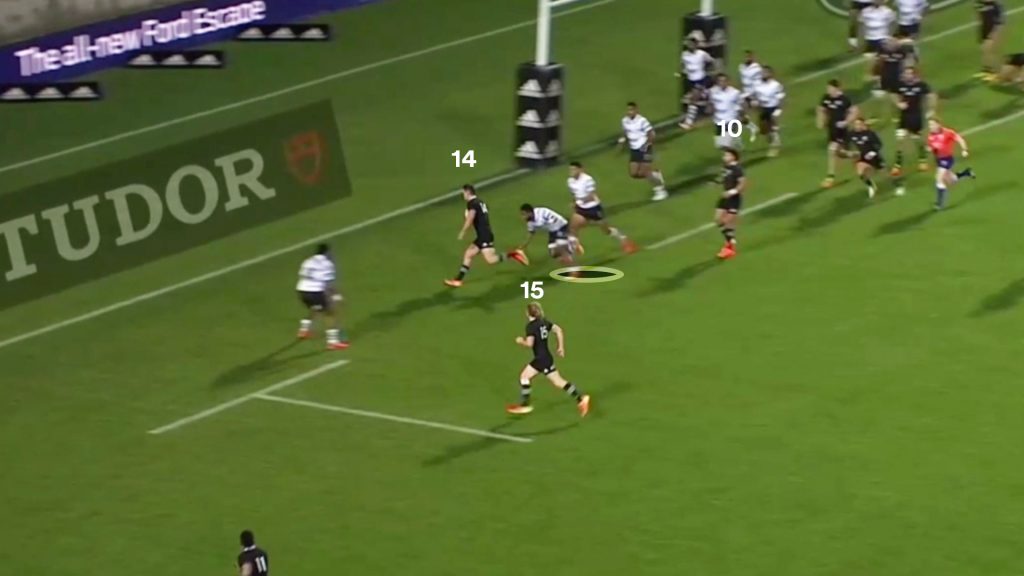
Mo’unga added a fourth try assist when he sent Rieko Ioane over from another blindside scrum play, putting an exclamation mark on his performance as a ball-playing wizard.
He added a line break when a midfield scrum play was forced back behind the gain line, with some improvisation from Anton Lienert-Brown with a late offload to the flyhalf, he gapped through some unsuspecting defence and almost added a fifth assist.
It was a five-star showing before being substituted in the 58th minute for Beauden Barrett, showing all the prowess he has promised during Super Rugby.
It seems the best way for the All Blacks to get the best out of Mo’unga is to offer familiarity in the form of his Crusaders combinations and by running the plays that they know well. With Brad Mooar shaping more of their attacking plans, that is beginning to happen as we see more and more of the concepts adopted by the All Blacks.
Of course, this means that Beauden Barrett faces a continual uphill battle to win back the starting first five role. With the current game plan, Mo’unga has all the advantages as he fits the bill naturally. It is being built for him.
Barrett is fast, but he doesn’t have the same game-breaking speed as his 26-year-old self. He doesn’t have the combinations with these players, outside of his brother, as he did with the likes of Ben Smith and Israel Dagg.
On the final scrum play of the game, the All Blacks ran the same blindside 8-9-10-14 play that Rieko Ioane had scored from earlier. When Barrett was given the ball from Brad Weber in the clear, he had a backpedalling wing 10-metres in front of him and a two-on-one opportunity.
He dummied, swerved, turned the winger inside-out, but then crowded Ioane’s space and almost collided with him. His one-hand flick pass sailed into touch as the cover defence banged him over the chalk.
The free-wheeling Barrett shaped to pass, tried to run at the gap, then tried to run to the outside, then as a last-ditch effort, threw a pass too late. It wasn’t two-steps ahead of the defence like Mo’unga.
It was an off-the-cuff experiment and Ioane had no idea what was happening.
When Barrett was at his peak in 2016, it was all about his speed and broken play. His running game was torching defences, and he thrived off unstructured situations. No player could manufacture points against the run of play out of thin air like Barrett.
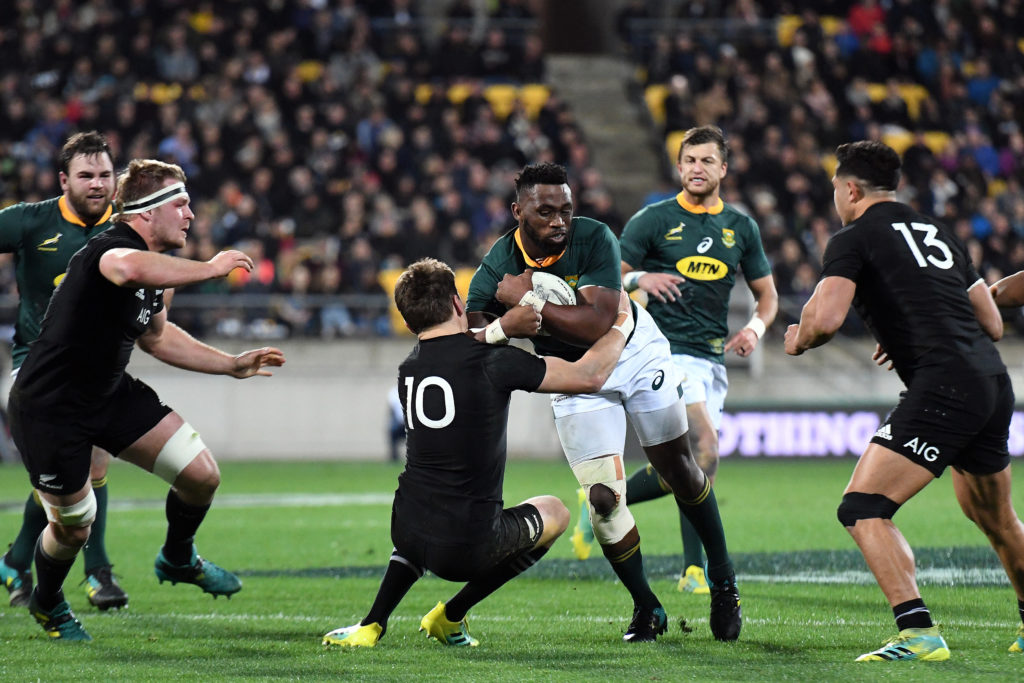
But this All Blacks team isn’t playing for counter-attacking opportunities as much. Barrett is fast, but he doesn’t have the same game-breaking speed as his 26-year-old self. He doesn’t have the combinations with these players, outside of his brother, as he did with the likes of Ben Smith and Israel Dagg.
He is a standing legend with 91 tests to his name but his new role looks like playing second fiddle to Mo’unga heading into the Rugby Championship. You can’t discount what Barrett brings to a 23 though, as the opponents get tougher and points dry up from planned moves, a little bit of unstructured Barrett magic from the bench could be needed to win games.
One thing you can never question about Barrett is his toughness, and the most underappreciated aspect of his game is his defence. Barrett grew into his frame and became a T-1000 model Terminator in the backfield.
He saved as many tries as he scored, chasing down just about anyone. You couldn’t escape him. When Volavola took that intercept and was mowed down by McKenzie, Barrett was there too to assist with the save.
When the All Blacks reach the likes of the Pumas and Springboks in what will be battles of attrition, starting Barrett could give your defence a little extra, whereas we know Mo’unga will be targetted.
Until then, Mo’unga will be given the opportunity against the Wallabies to continue doing what he has been. The 27-year-old is ready to break out at test level and put together a signature test season.



Comments
Join free and tell us what you really think!
Sign up for free